Abstract
1. In order to determine the nervous outflow from skeletal muscle during chemically induced muscle pain, the impulse activity of various types of muscle afferents in response to close intra-arterial injections of pain-producing substances (bradykinin, 5-hydroxytryptamine, histamine and potassium) was studied in anaesthetized cats using a single fibre recording technique.
2. By administration of algesic agents in doses which produce pain in man and pain reactions in animals, about half of the group IV and two thirds of the group III muscle afferents could be activated. In contrast, group II and group I afferent units were usually not excited by chemical noxious stimulation. If effects at all occurred in the thick myelinated afferents, they consisted of a depression of the fibre activity rather than of an activation.
3. The qualitative features of the discharges of group III muscle afferents induced by chemical stimulation resembled those of the group IV units very closely. The group III units differed from the group IV afferents in that their responses to a given dose of bradykinin were of greater magnitude.
4. It is concluded that the chemically induced muscle pain is probably mediated by certain portions of the group IV and group III afferents, whereas the reactions of group II and group I units to algesic agents are such that a contribution to muscular chemo-nociception seems improbable.
Full text
PDF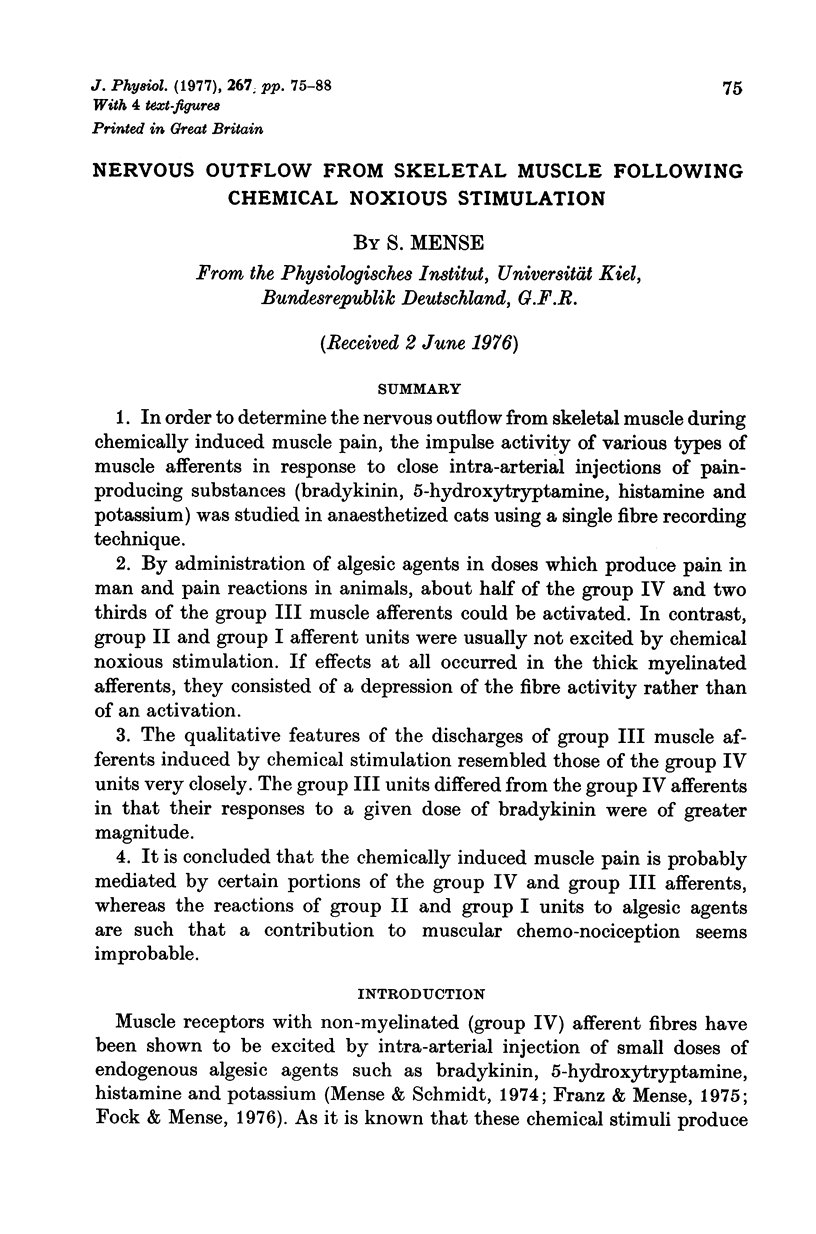
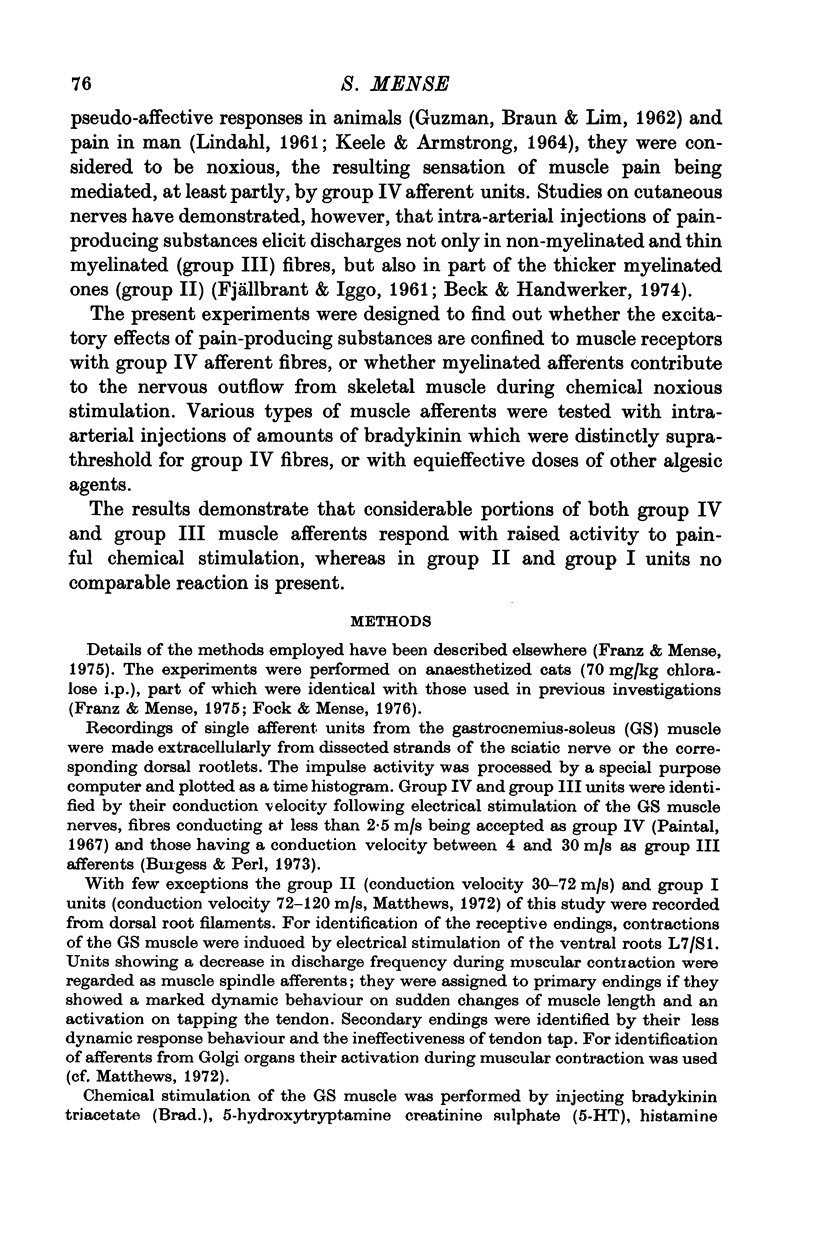
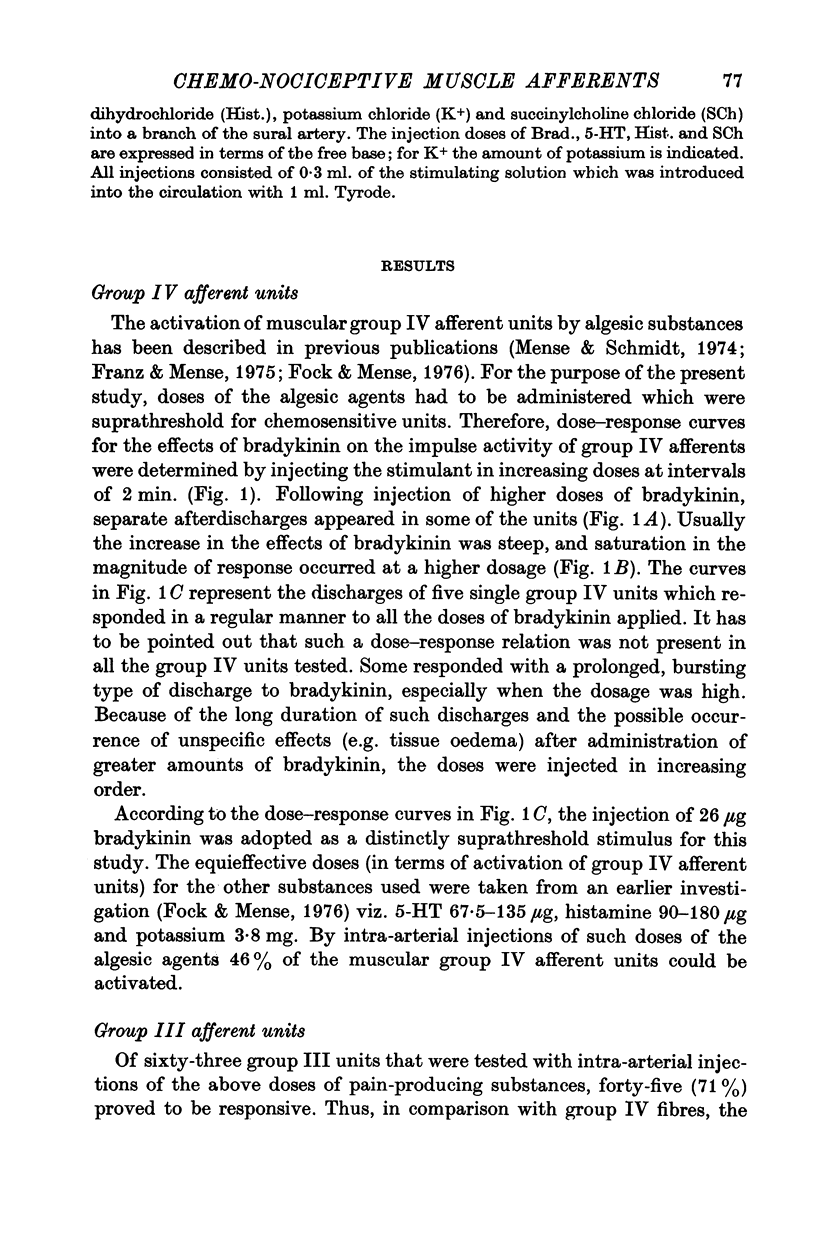
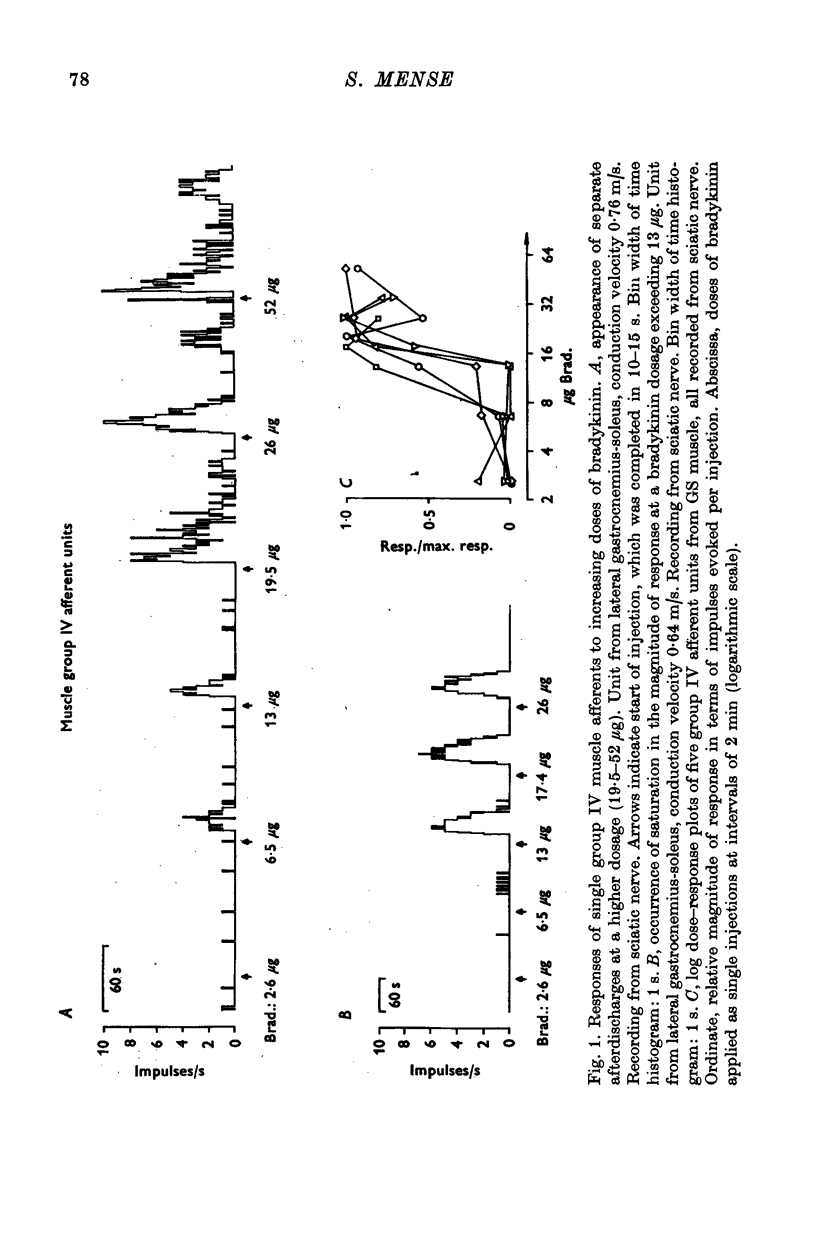
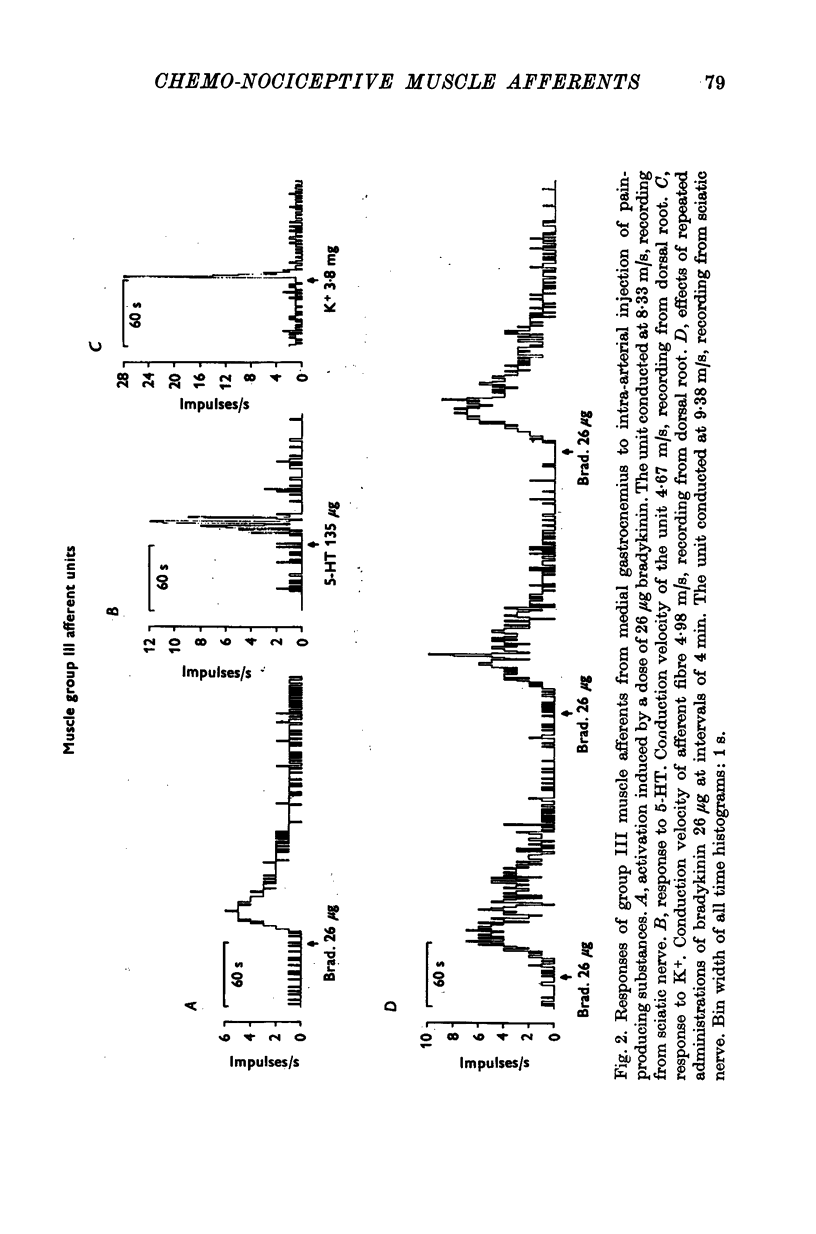
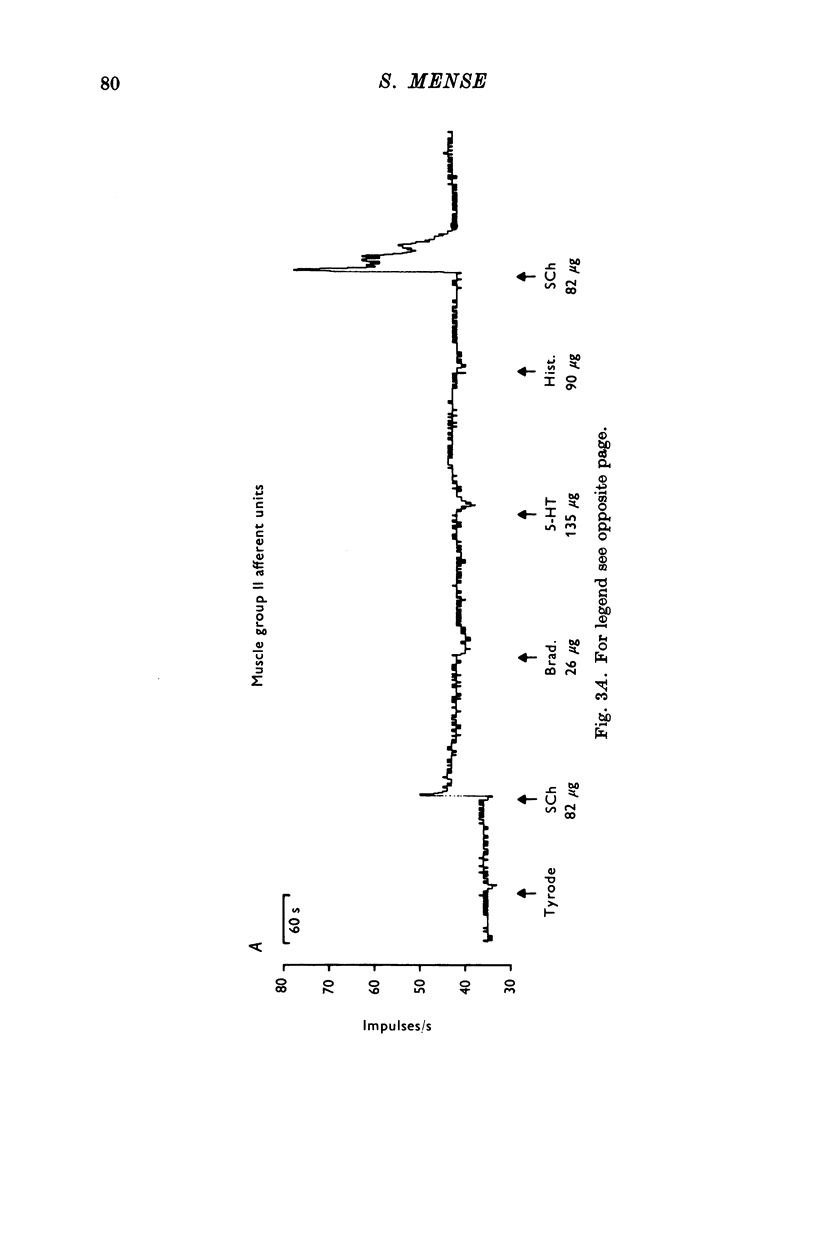
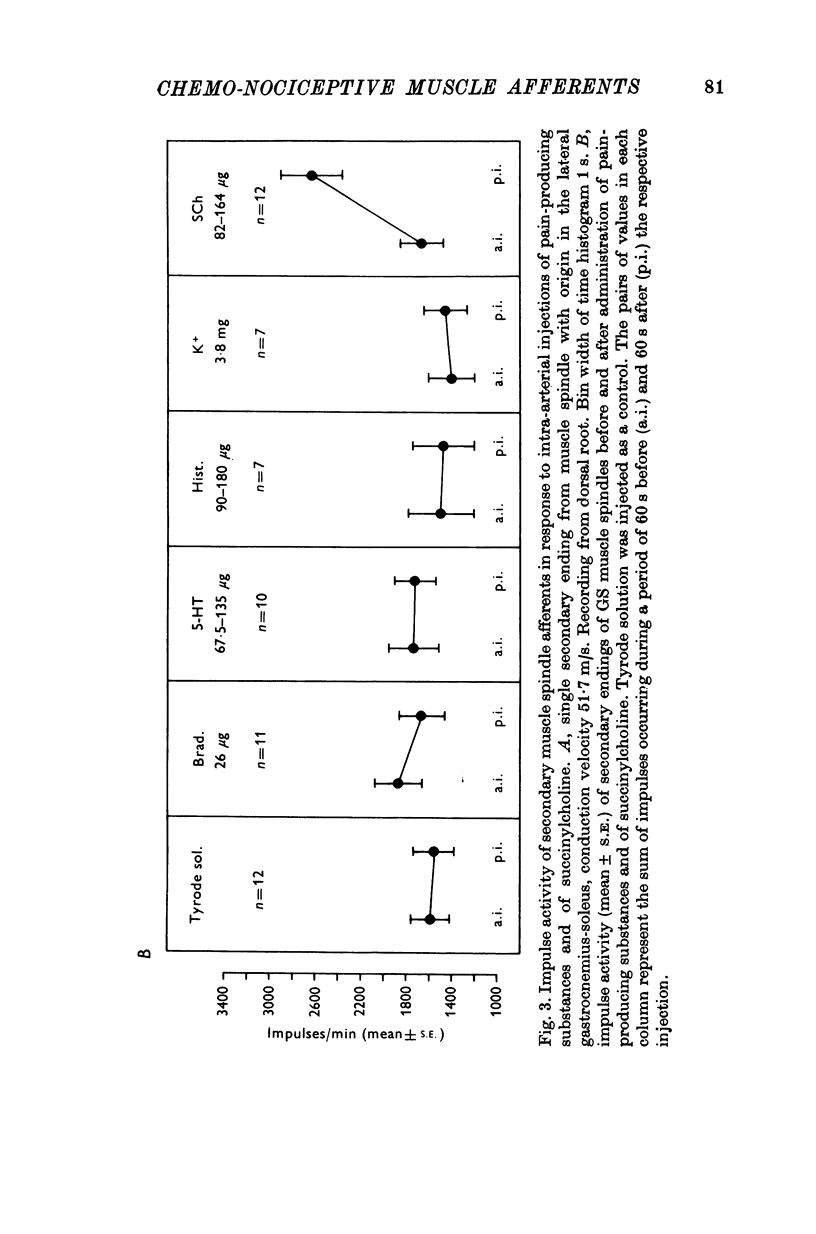
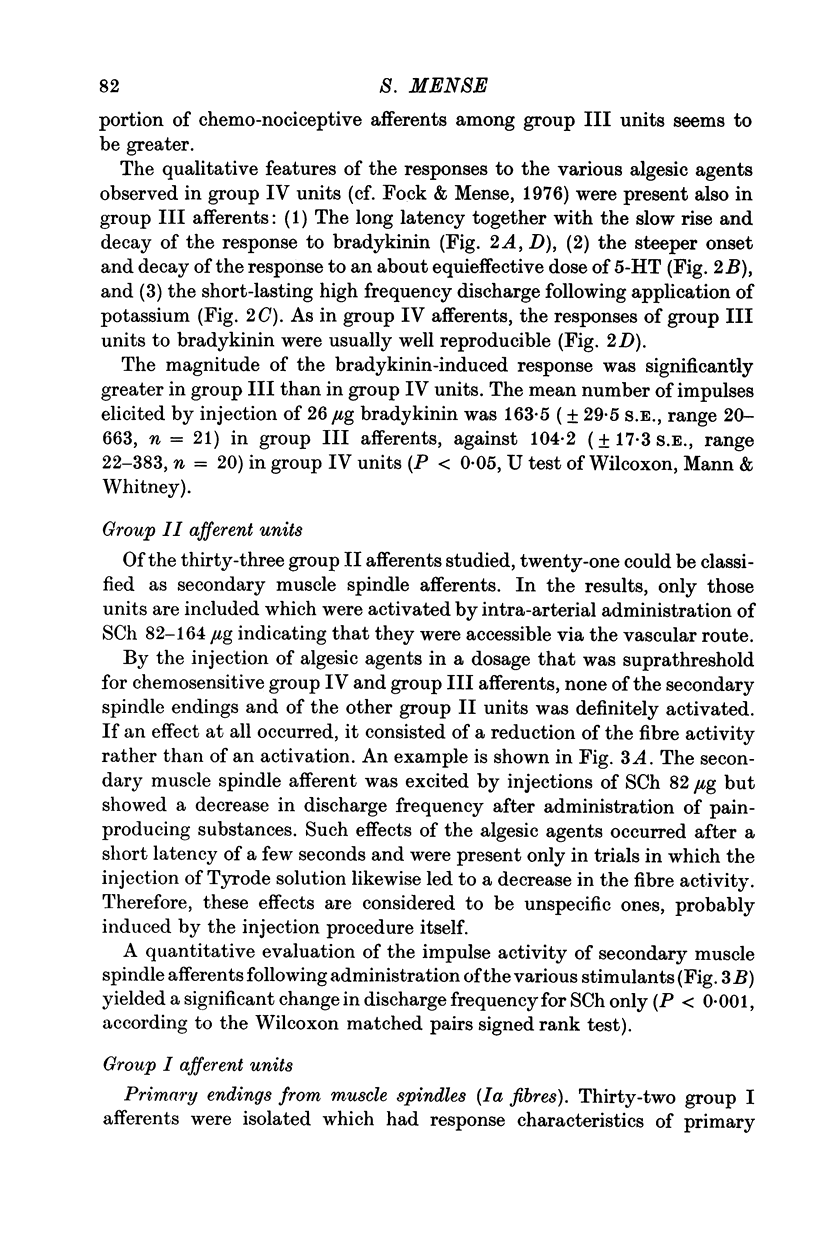
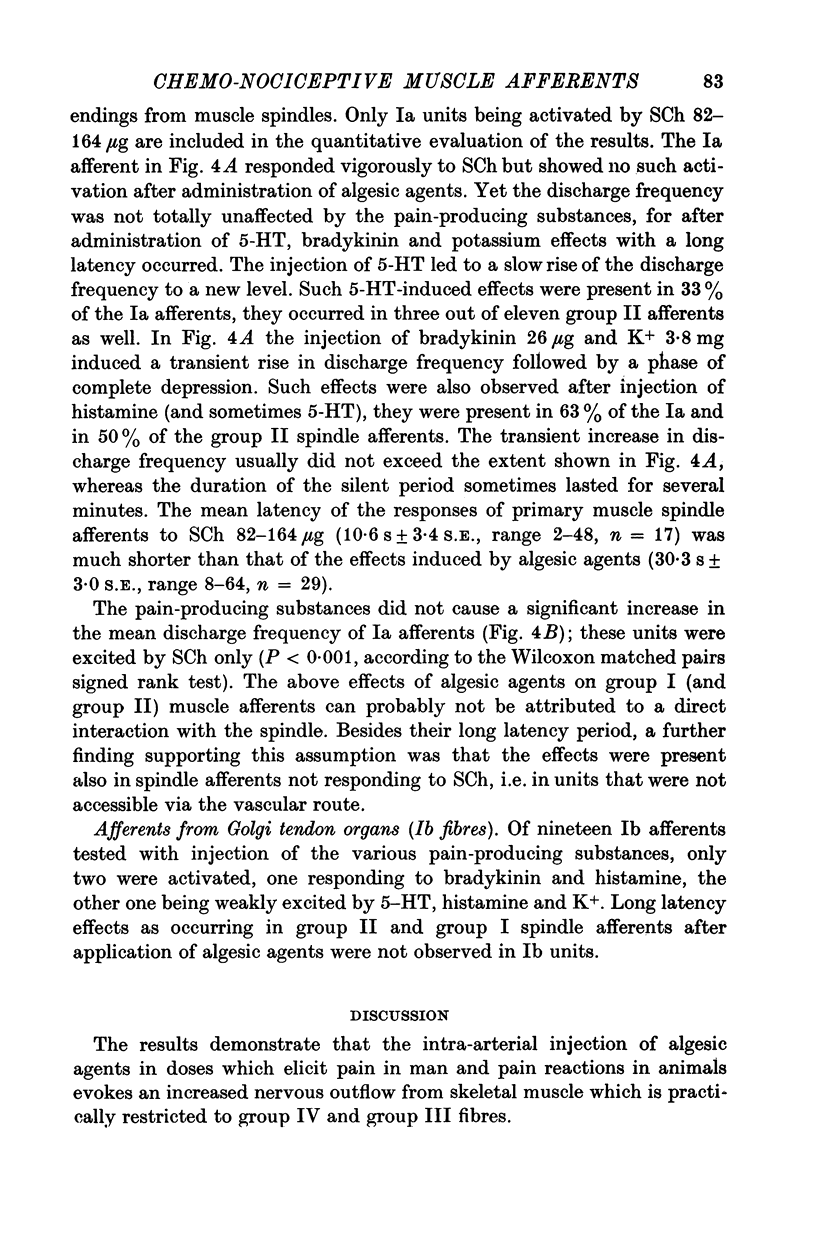
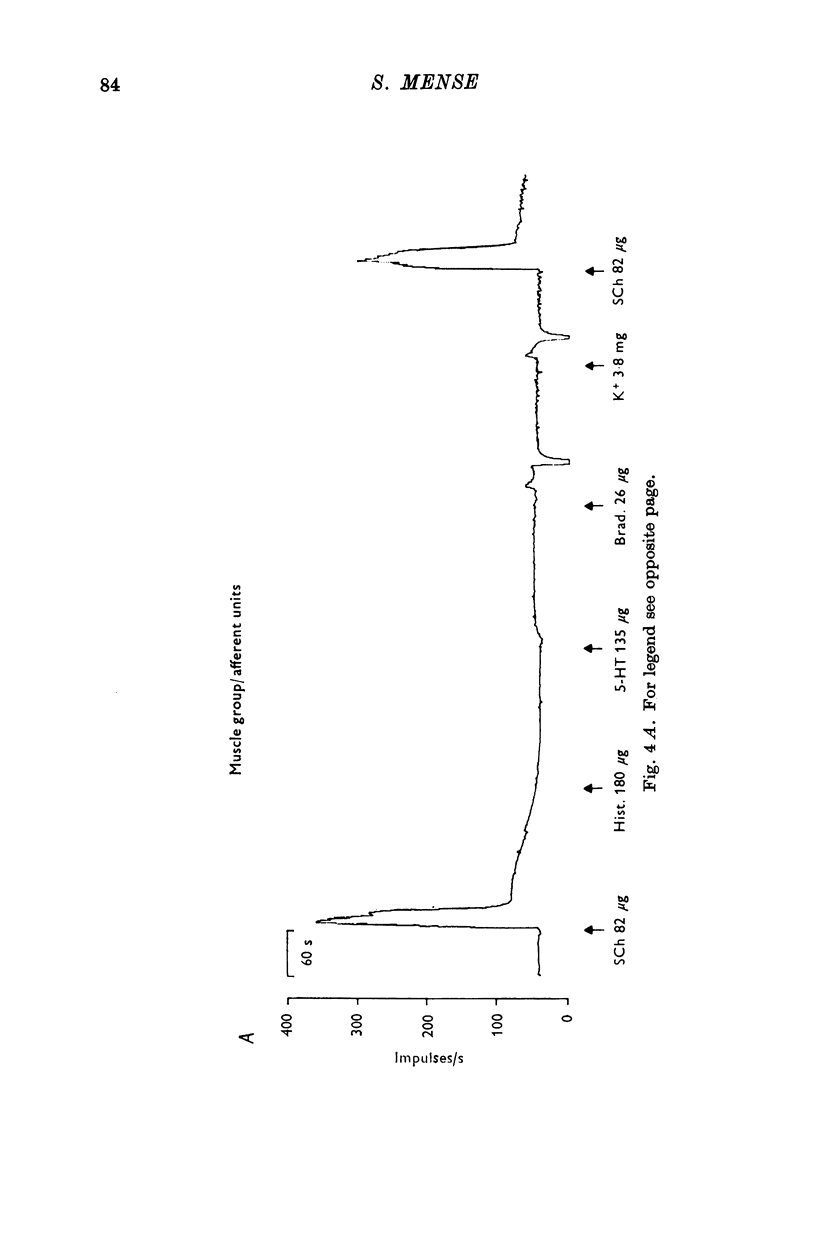
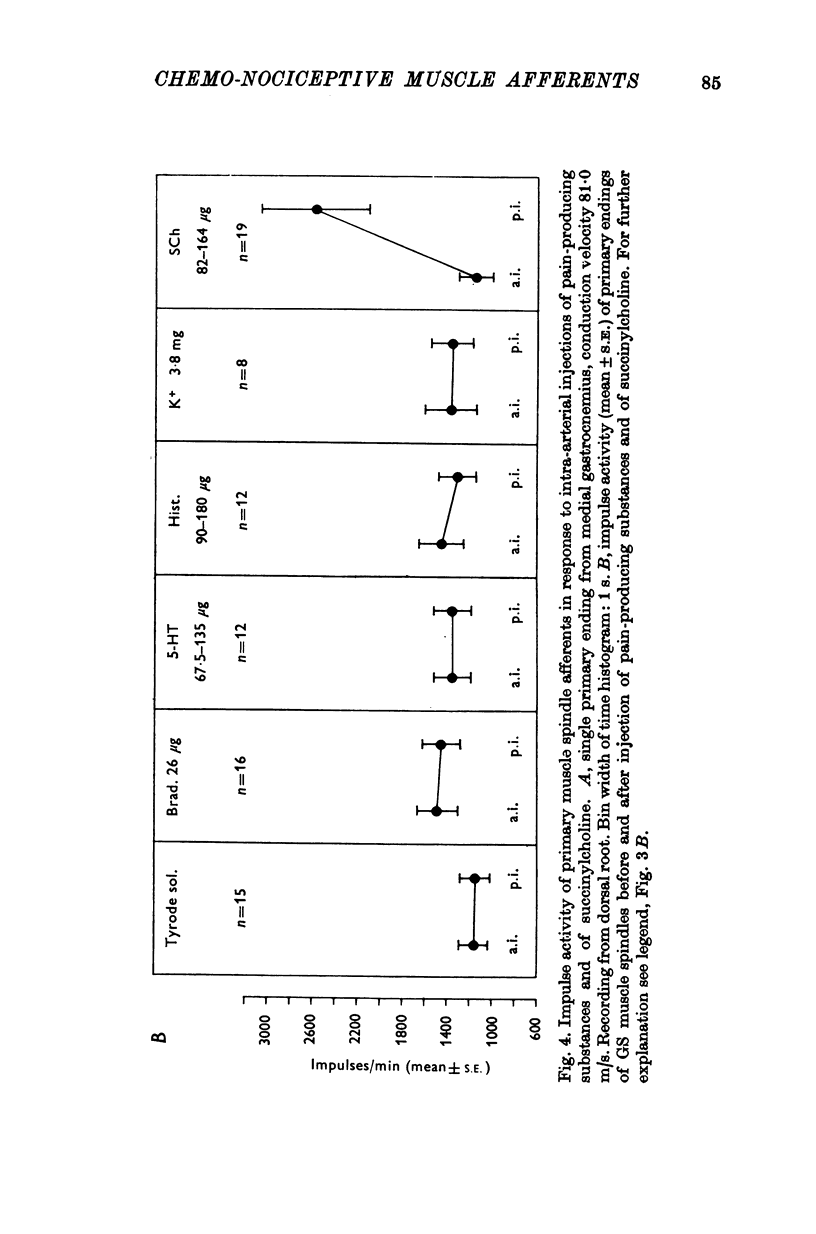
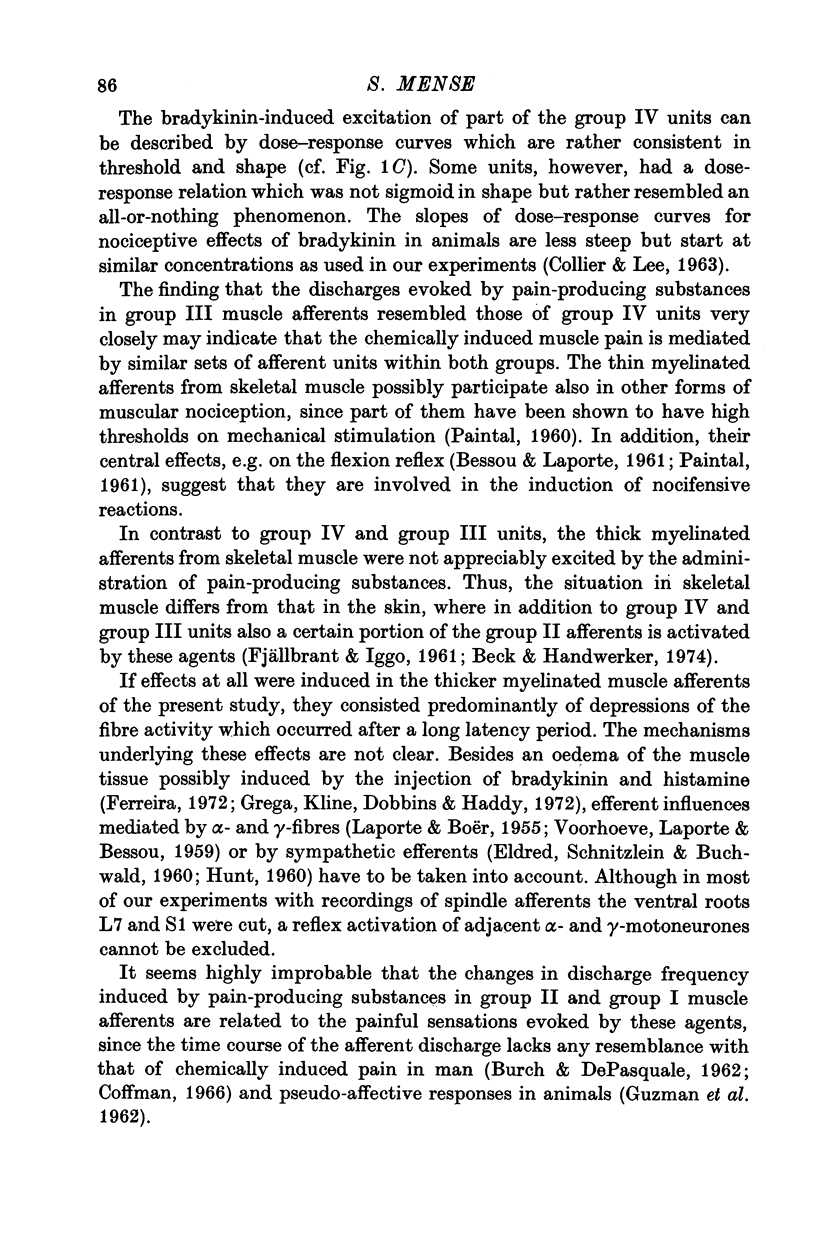
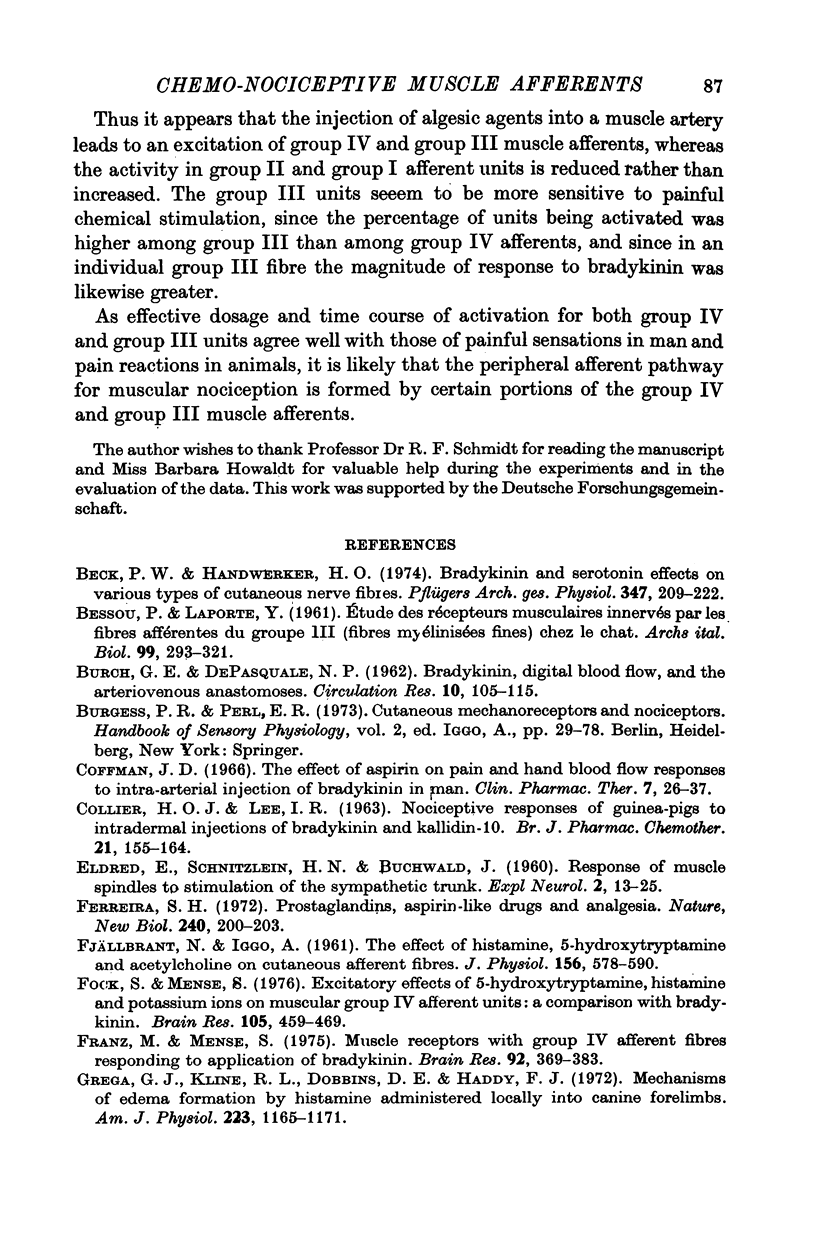

Selected References
These references are in PubMed. This may not be the complete list of references from this article.
- BURCH G. E., DEPASQUALE N. P. Bradykinin, digital blood flow, and the arteriovenous anastomoses. Circ Res. 1962 Jan;10:105–115. doi: 10.1161/01.res.10.1.105. [DOI] [PubMed] [Google Scholar]
- Beck P. W., Handwerker H. O. Bradykinin and serotonin effects on various types of cutaneous nerve fibers. Pflugers Arch. 1974 Mar 11;347(3):209–222. doi: 10.1007/BF00592598. [DOI] [PubMed] [Google Scholar]
- COLLIER H. O., LEE I. R. NOCICEPTIVE RESPONSES OF GUINEA-PIGS TO INTRADERMAL INJECTIONS OF BRADYKININ AND KALLIDIN-10. Br J Pharmacol Chemother. 1963 Aug;21:155–164. doi: 10.1111/j.1476-5381.1963.tb01511.x. [DOI] [PMC free article] [PubMed] [Google Scholar]
- Coffman J. D. The effect of aspirin on pain and hand blood flow responses to intra-arterial injection of bradykinin in man. Clin Pharmacol Ther. 1966 Jan-Feb;7(1):26–37. doi: 10.1002/cpt19667126. [DOI] [PubMed] [Google Scholar]
- ELDRED E., SCHNITZLEIN H., BUCHWALD J. Response of muscle spindles to stimulation of the sympathetic trunk. Exp Neurol. 1960 Feb;2:13–25. doi: 10.1016/0014-4886(60)90044-3. [DOI] [PubMed] [Google Scholar]
- FJALLBRANT N., IGGO A. The effect of histamine, 5-hydroxytryptamine and acetylcholine on cutaneous afferent fibres. J Physiol. 1961 May;156:578–590. doi: 10.1113/jphysiol.1961.sp006694. [DOI] [PMC free article] [PubMed] [Google Scholar]
- Ferreira S. H. Prostaglandins, aspirin-like drugs and analgesia. Nat New Biol. 1972 Dec 13;240(102):200–203. doi: 10.1038/newbio240200a0. [DOI] [PubMed] [Google Scholar]
- Fock S., Mense S. Excitatory effects of 5-hydroxytryptamine, histamine and potassium ions on muscular group IV afferent units: a comparison with bradykinin. Brain Res. 1976 Apr 9;105(3):459–469. doi: 10.1016/0006-8993(76)90593-x. [DOI] [PubMed] [Google Scholar]
- Franz M., Mense S. Muscle receptors with group IV afferent fibres responding to application of bradykinin. Brain Res. 1975 Jul 18;92(3):369–383. doi: 10.1016/0006-8993(75)90323-6. [DOI] [PubMed] [Google Scholar]
- GUZMAN F., BRAUN C., LIM R. K. Visceral pain and the pseudaffective response to intra-arterial injection of bradykinin and other algesic agents. Arch Int Pharmacodyn Ther. 1962 Apr 1;136:353–384. [PubMed] [Google Scholar]
- Grega G. J., Kline R. L., Dobbins D. E., Haddy F. J. Mechanisms of edema formation by histamine administered locally into canine forelimbs. Am J Physiol. 1972 Nov;223(5):1165–1171. doi: 10.1152/ajplegacy.1972.223.5.1165. [DOI] [PubMed] [Google Scholar]
- HUNT C. C. The effect of sympathetic stimulation on mammalian muscle spindles. J Physiol. 1960 May;151:332–341. doi: 10.1113/jphysiol.1960.sp006441. [DOI] [PMC free article] [PubMed] [Google Scholar]
- LAPORTE Y., BOER A. Réflexe de flexion ipsilatéral provoqué par les fibres amyéliniques chez le chat spinal. C R Seances Soc Biol Fil. 1955 Apr;149(7-8):808–810. [PubMed] [Google Scholar]
- Mense S., Schmidt R. F. Activation of group IV afferent units from muscle by algesic agents. Brain Res. 1974 Jun 7;72(2):305–310. doi: 10.1016/0006-8993(74)90870-1. [DOI] [PubMed] [Google Scholar]
- PAINTAL A. S. Functional analysis of group III afferent fibres of mammalian muscles. J Physiol. 1960 Jul;152:250–270. doi: 10.1113/jphysiol.1960.sp006486. [DOI] [PMC free article] [PubMed] [Google Scholar]
- PAINTAL A. S. Participation by pressure-pain receptors of mammalian muscles in the flexion reflex. J Physiol. 1961 May;156:498–514. doi: 10.1113/jphysiol.1961.sp006689. [DOI] [PMC free article] [PubMed] [Google Scholar]
- Paintal A. S. A comparison of the nerve impulses of mammalian non-medullated nerve fibres with those of the smallest diameter medullated fibres. J Physiol. 1967 Dec;193(3):523–533. doi: 10.1113/jphysiol.1967.sp008376. [DOI] [PMC free article] [PubMed] [Google Scholar]


